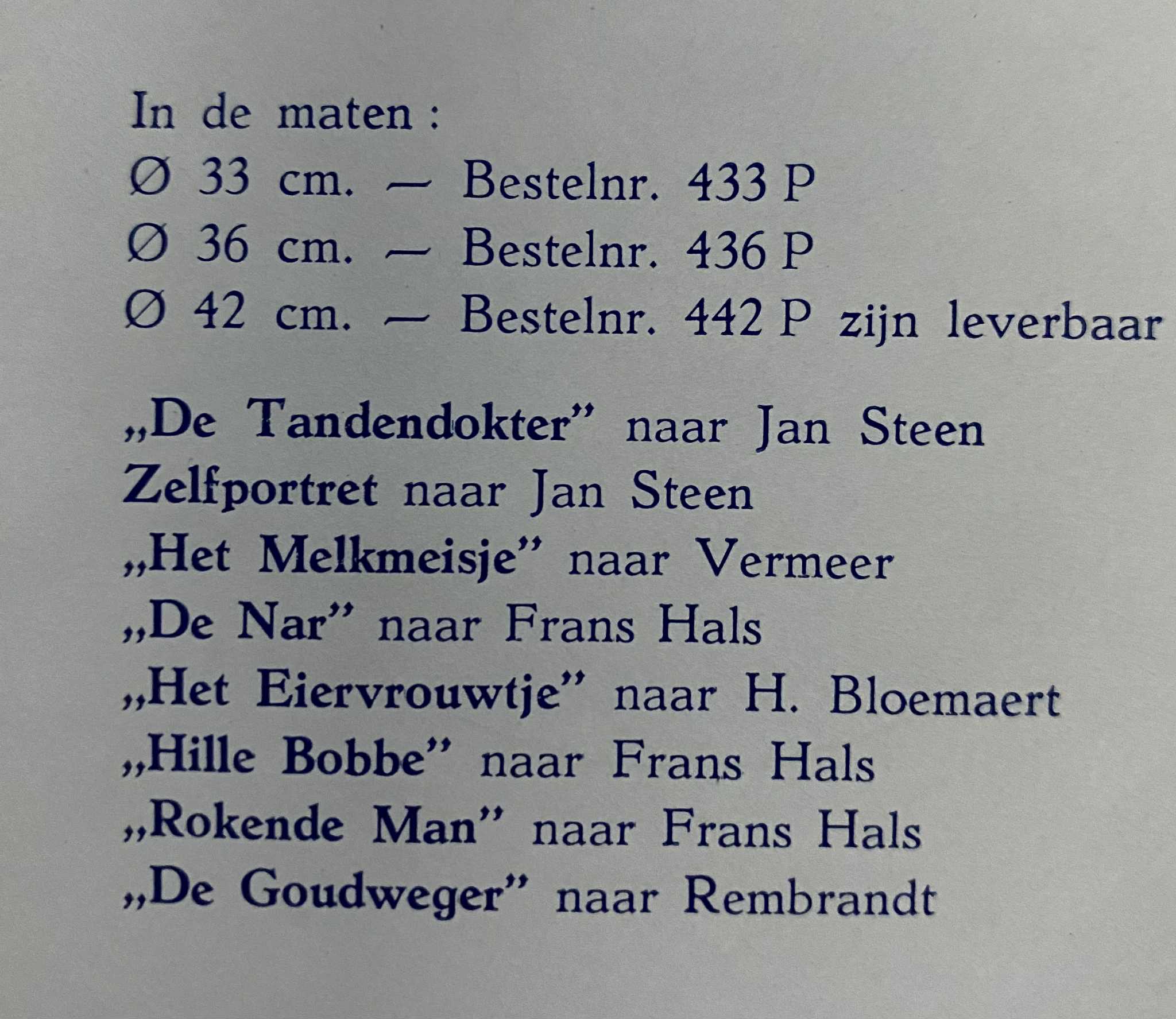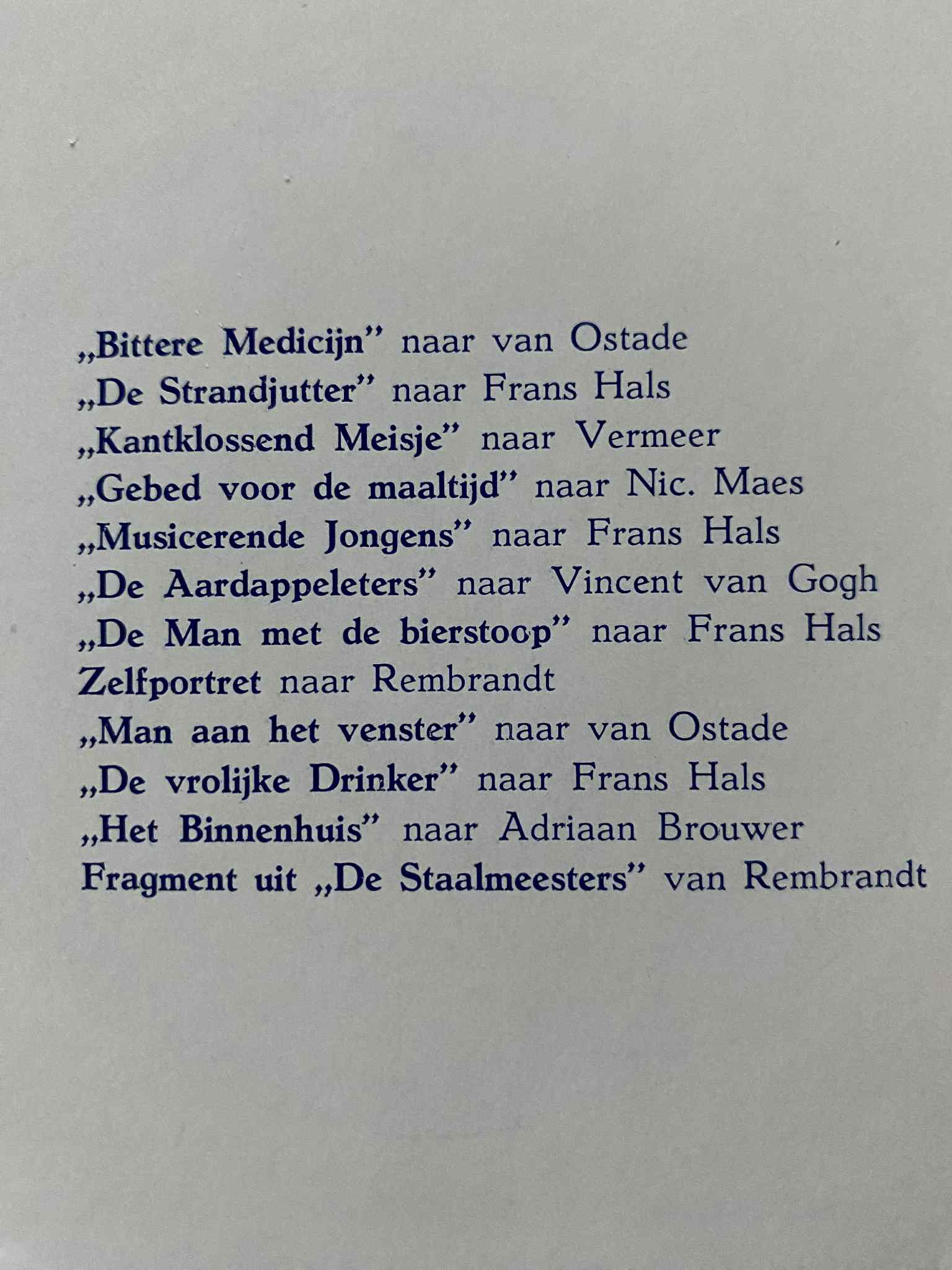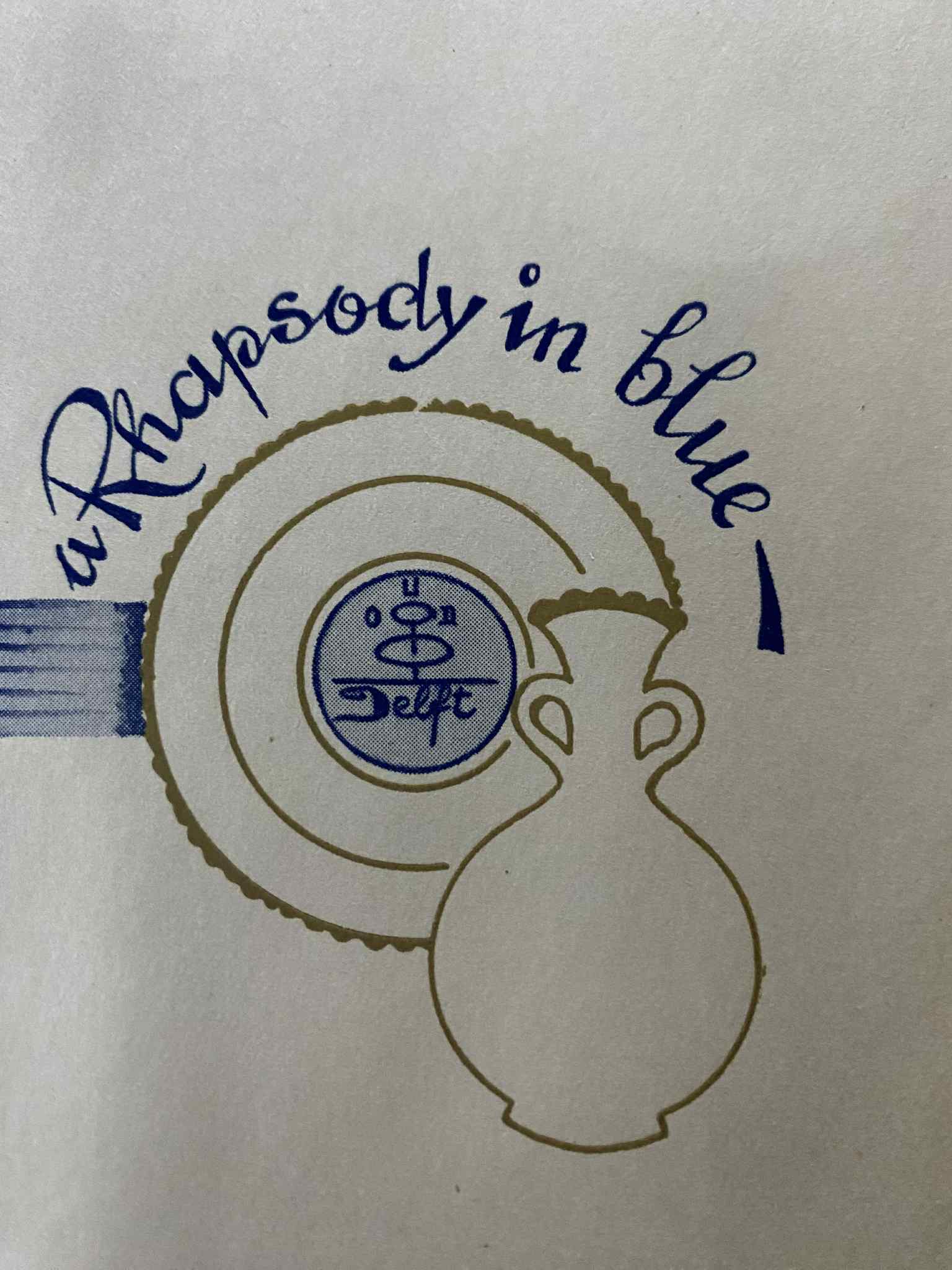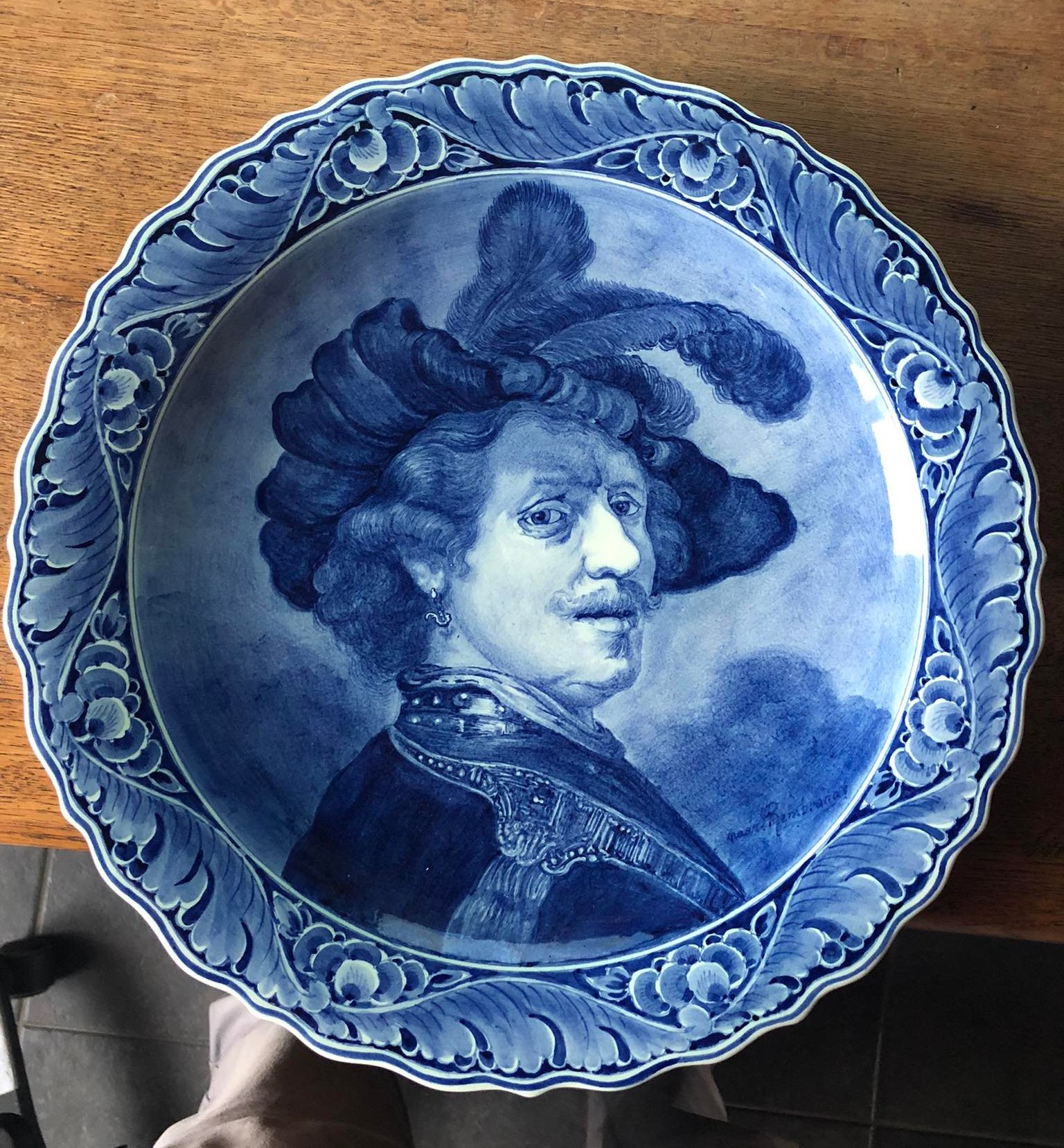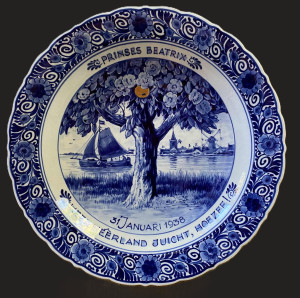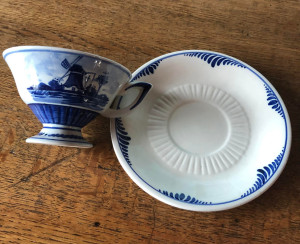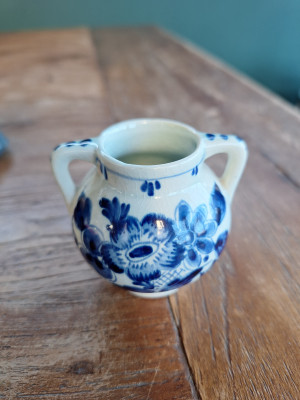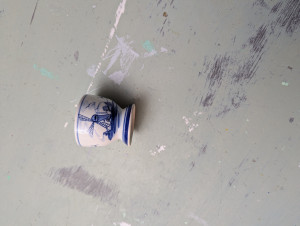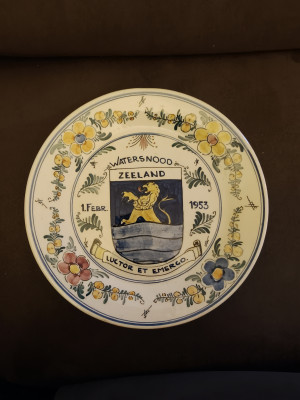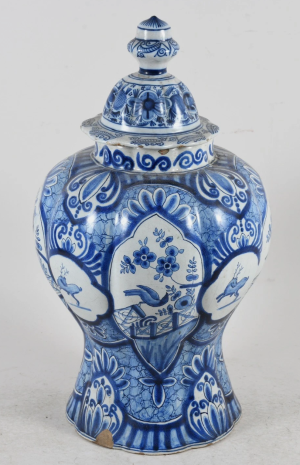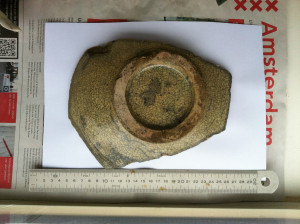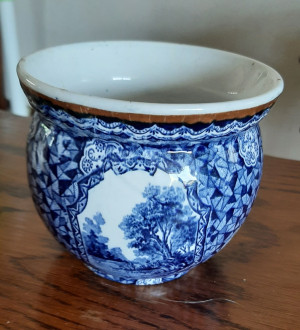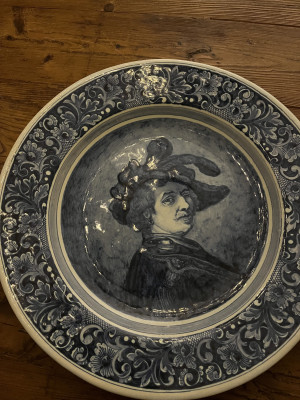Shared objects
Last comments
Dit is van Zuid-Holland ( ook plazuid genaamd) gemaakt in 1920 en geschilderd door Andreas Bizot die er werkte van 1908 tot 1925.
mvg Franky
Brabantia (keramiek) was een Nederlandse aardewerkfabriek, actief in de eerste helft van de 20e eeuw. Ergens tussen 1920 en 1940 . Dergelijk aardewerk werd vaak gemaakt in of rond Noord-Brabant of de Gouda-traditie, al is dit geen klassiek Plateelmerk zoals Regina of Zuid-Holland. Hieronder een kannetje in mijn bezit van dezelfde fabriek.
mvg Franky
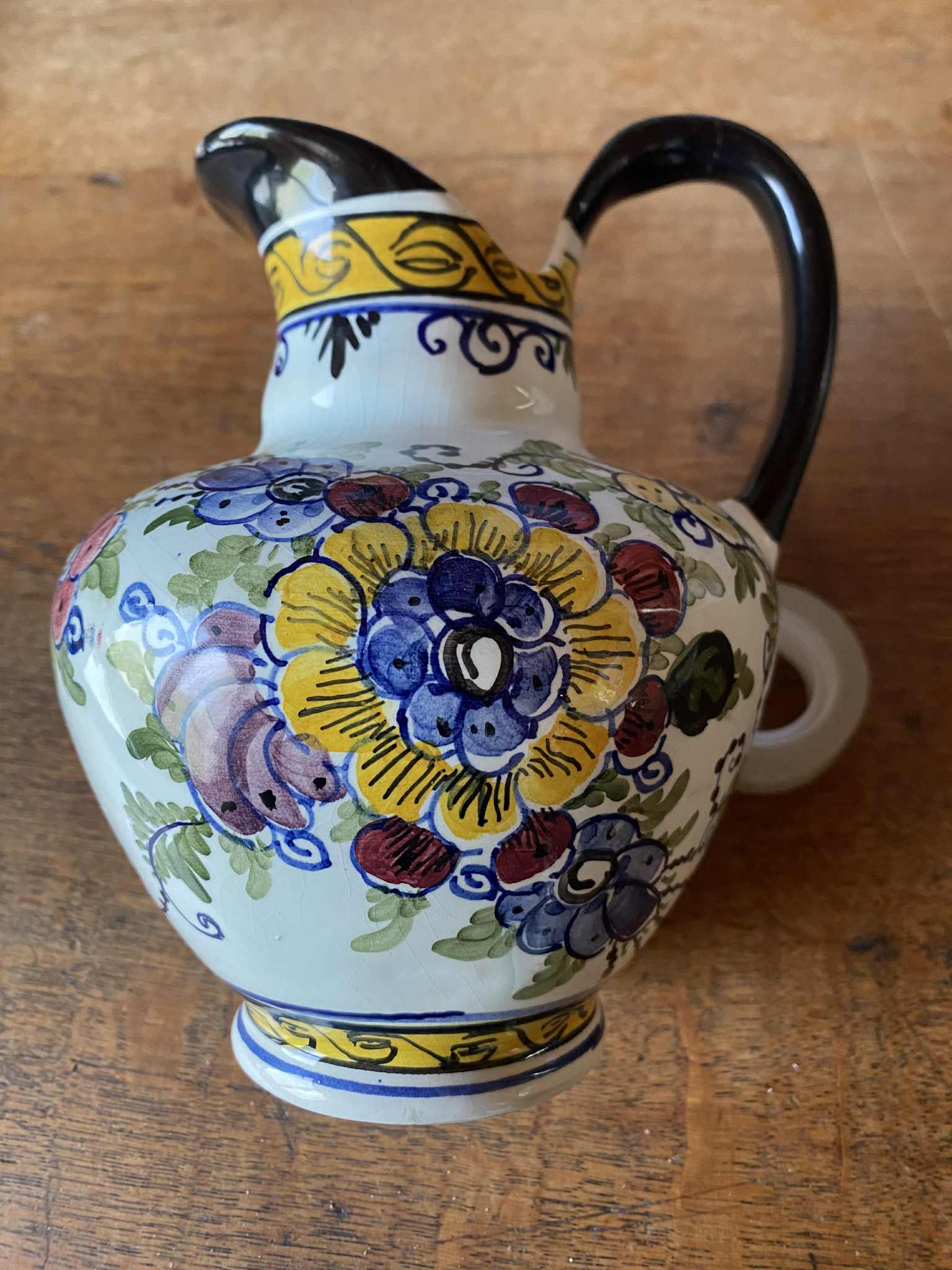
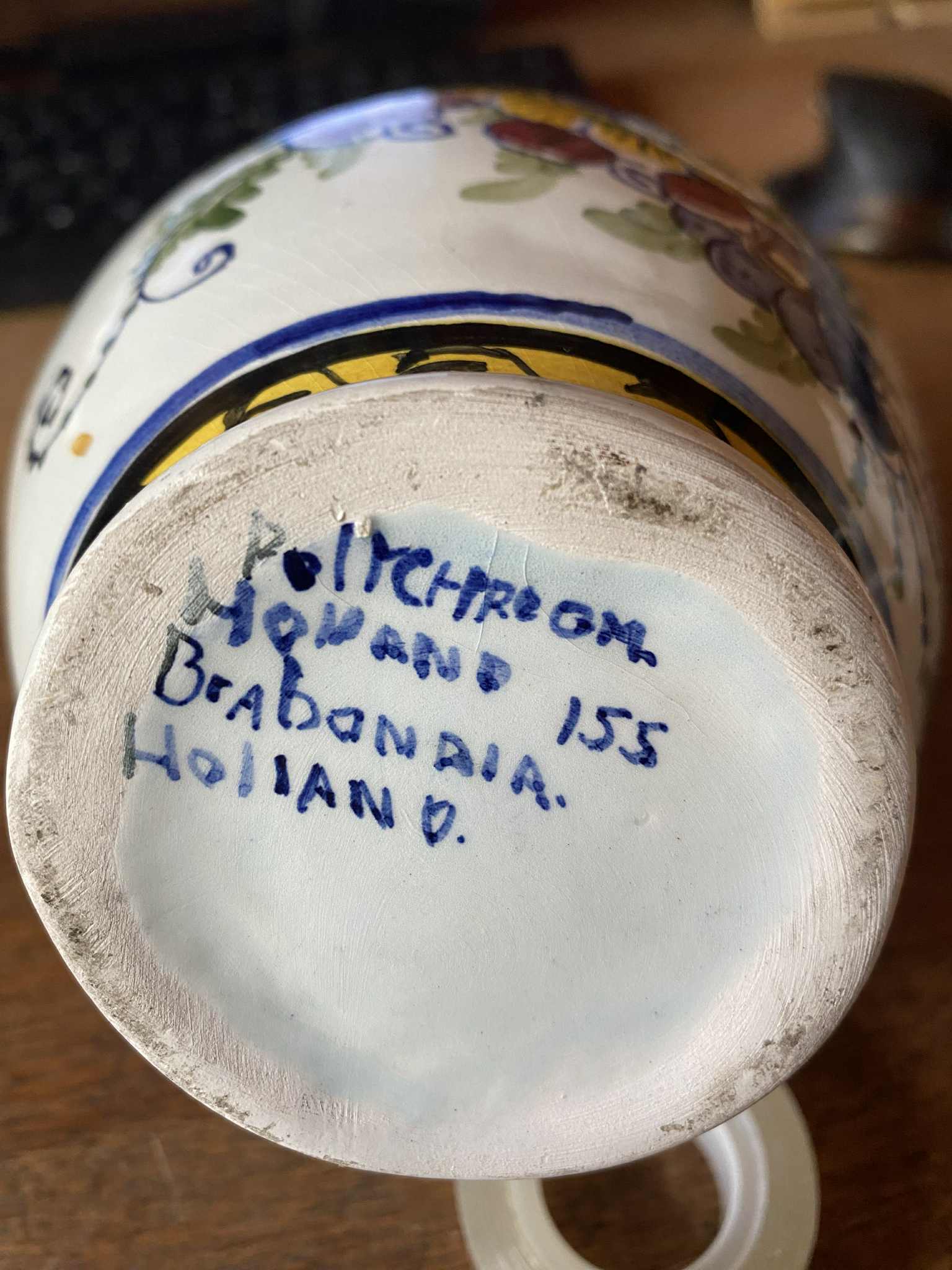
In reply to Deze kwam ik nog wel tegen… by JAN SMIT
Bij Staple repair werden kleine gaatjes aan weerszijden van de breuk geboord en werden metalen nietjes (vaak van dun messingdraad) door de gaten gelust om de stukken bij elkaar te houden. Soms werden de openingen opgevuld met gips of een ander bindmiddel. Als het opject vrij dun is kan het zijn dat het tot de bovenzijde zichtbaar wordt. Deze reparatiemethode was gebruikelijk tot het einde van de 19e eeuw, toen betere lijmen en moderne restauratietechnieken beschikbaar kwamen. Op heden is het mogelijk - indien gewenst - deze te laten verwijderen en te vervangen door moderne restauratiemethodes. Een zeer goede optie is https://www.margotvanos.nl/
Wat het aantal bloementuilen betreft zijn er inderdaad verscheidene aantallen mogelijk. Waarschijnlijk volgens de grootte en het te verdelen vlak. Hieronder eentje met acht tuilen van 50 cm en gemerkt AR for Adriaan Rijselberg, the "De Grieksche A
mvg

This is a lidded vase made by Makkum Tichelaar. So, Frisian pottery. According to historical research and the registration of maker's marks at Tichelaar Makkum, the pieces with the two crossed T's were first consistently marked by the brothers Jelmer Pieters Tichelaar (1831-1911) and Jan Pieters Tichelaar (1835-1919), who ran the company from around 1868. Only in the last years of the 19th century (around ±1890) do you see the crossed T's regularly applied on pottery as a recognizable mark. Your lidded vase appears in the catalog from around 1880, so it can be dated between 1880 and 1910. The lid is probably not original to this vase.
kind regards Franky
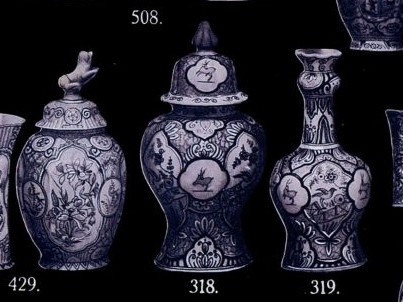
Delfts, laat 18de eeuw. Omdat porselein en Delfts aardewerk dure en gewaardeerde bezittingen waren, was reparatie door gespecialiseerde 'pottenlappers' een kosteneffectieve manier om de levensduur van een geliefd of waardevol object te verlengen. Dergelijke herstellingen met nietjes werden ook in Nederland uitgevoerd. Deze techniek stond bekend als 'klemmen' of 'riveting' en werd veelvuldig gebruikt in de 18e en 19e eeuw om gebroken keramiek en porselein te repareren.
Het merk op de achterzijde is waarschijnlijk een nummer voor intern gebruik. Slechts ongeveer een derde van het Delfts aardewerk draagt/droeg een merk. Moeilijk om de exacte herkomst te bepalen. Op heden vervaardigt de porceleyne fles nog steeds een vergelijkbaar decor mat zes bloementuilen, welliswaar in transfertechniek.
mvg Franky

Waarschijnlijk een 17e-eeuws tinglazuur (Delfts/majolica) bord- of schaalfragment:
Voorzijde: wit tinglazuur + blauw schilderwerk,. Achterzijde: ruwe, deels geglazuurde schijf met craquelé en een hoge voetring
Dergelijk materiaal wordt in Amsterdam zeer veel gevonden in lagen uit de 17e eeuw.Gevonden in Amsterdam: past perfect bij stedelijke afvallaag uit deze tijd
je scherf is 17e-eeuws Nederlands aardewerk, waarschijnlijk uit Delft of een van de andere Hollandse faience-centrums (Haarlem, Amsterdam, Rotterdam). Zie ook : https://delftsaardewerk.nl/dadd/33791
mvg
U bezit een authentiek en goed bewaard stuk van Villeroy & Boch uit het begin van de moderne keramiekproductie. Het is een mooi antiek object en een goed voorbeeld van de decoratieve transferware uit die tijd.
Het kasteel/toren stempel met de naam "VILLEROY & BOCH" daaronder is een variant die wijst op de productie in hun meest bekende fabriek in Mettlach, Duitsland of een van hun andere productielocaties in die periode (zoals Wallerfangen of Septfontaines).
Het specifieke toren- of kasteelmerk van Villeroy & Boch, met de naam onderaan, werd in verschillende perioden gebruikt, maar deze stijl van stempel is vaak geassocieerd met hun productie uit de late 19e en vroege 20e eeuw (grofweg 1870 - 1920)
mvg Franky
Difficult to say for sure without a photo of the back, but most likely made by Mosa Maastricht in collaboration with Het tegelhuis from Alphen aan de Rijn in Holland. Walltile -works series. See similar tiles below.
Kind regards Franky
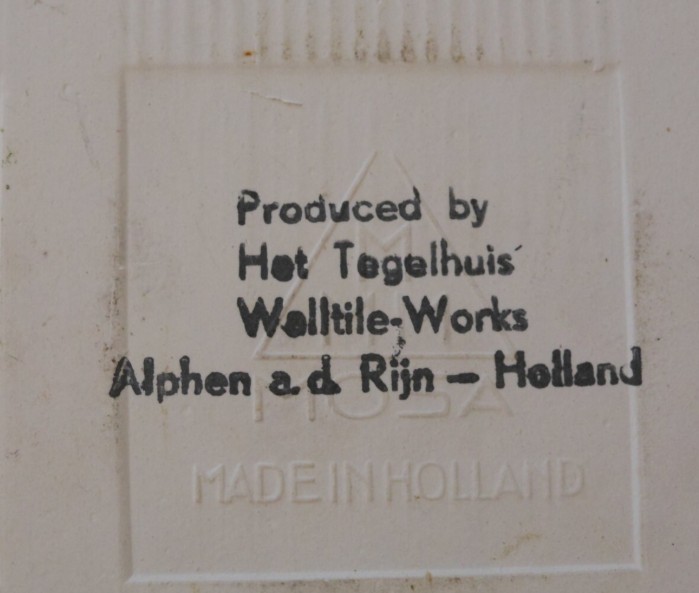
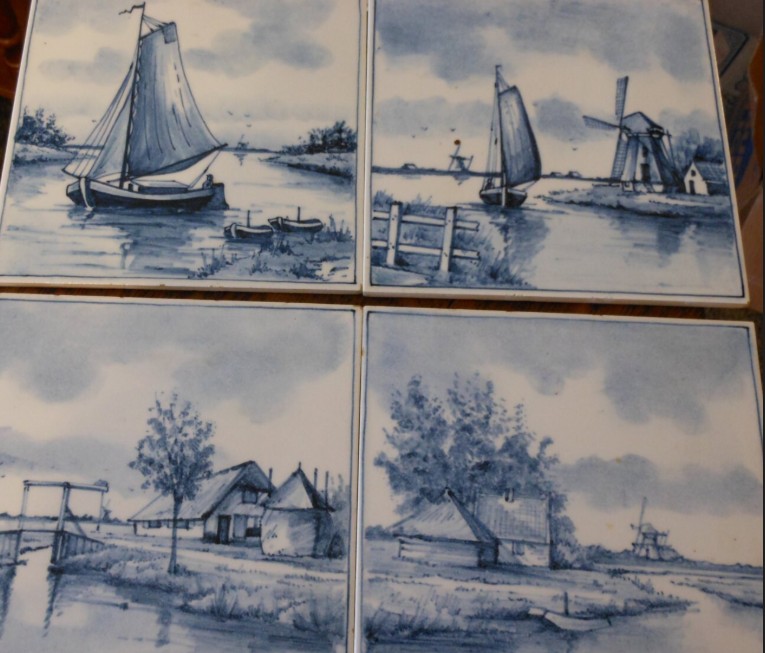
Staat in de catalogus van 1935 en maakt deel uit van een reeks van twintig decors in drie verschillende formaten. N.l. 33 cm, 36 cm en zoals de uwe 42 cm. Uw schotel zou moeten gemerkt zijn met 442 P doch met een andere randbeschildering ( mogelijks op bestelling want dit was perfect mogelijk). De schilder PVW ( merk met drie stippen ) is helaas niet kenbaar gemaakt of bijgehouden. Wél staat hij geregistreerd als schilder maar enkel onder initialen. Uw bord is duidelijk handgeschilderd doch minder gedetailleerd en minder fijn geschilderd dan werk van bvb Van der Starre, Jo prengers of Jacques bitter en Theo van Tienen die later in 1954 de Delftse Pauw opgericht heeft. Te dateren ergens rond 1940. helemaal onderaan een identiek decor geschilderd door Jacques Bitter.
mvg Franky
